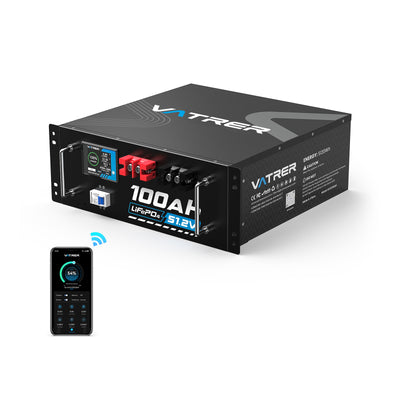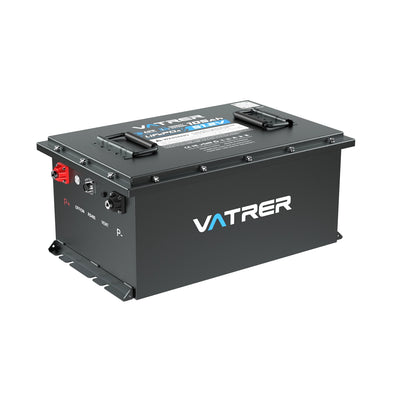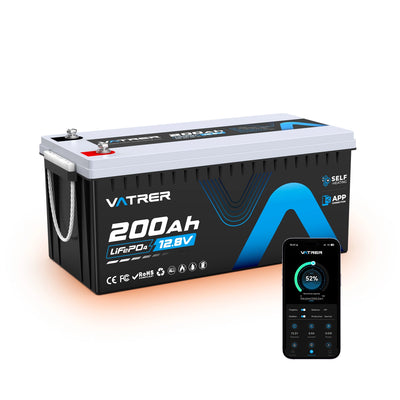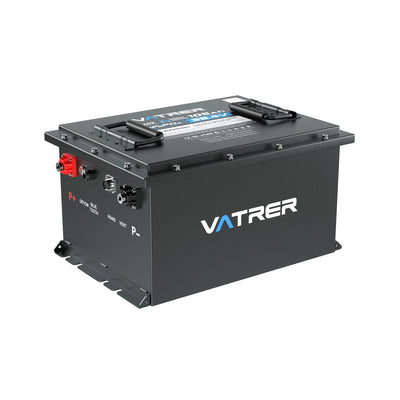
How Many Lithium Batteries Do I Need for a 48V Golf Cart
Golf carts are a convenient and enjoyable way to get around the course, your neighbourhood, or a campsite. If you are thinking about upgrading to lithium power on a 48V golf cart, you have probably wondered, “How many lithium batteries does a golf cart actually need?” Getting this right is essential to keep your cart—whether it is an EZGO, Yamaha, or Club Car—running smoothly and reliably.
Lithium batteries generally provide clear benefits compared with traditional lead-acid batteries, but selecting the correct quantity and specification means understanding what your cart really requires. In this guide, we explain the key points of running a 48V golf cart on lithium batteries, including typical configurations, what to look for when choosing a pack, installation advice, and more, so you can make a well-informed choice.

What Powers a 48V Golf Cart? Understanding Battery Basics
A 48V golf cart is an electric vehicle driven by a 48-volt battery system, commonly used for golf courses, local transport around residential communities, or leisure use such as camping. Major brands like EZGO, Yamaha and Club Car adopt this voltage because it offers a good compromise between power and efficiency, usually achieved using four 12V units or two 24V batteries wired in series.
However, it is worth stressing that using several separate batteries in series, as is often done with traditional golf cart packs, is not ideal for lithium. If each battery does not remain perfectly voltage-balanced, you are more likely to experience issues such as unexpected cut-outs or reduced performance.
A typical 18-hole round can draw roughly 3–6 kWh depending on gradients, driving style and passenger/load weight, so choosing suitable lithium golf cart batteries is essential to cover this energy demand. Unlike petrol carts, electric models depend entirely on the battery system, which is why many owners now turn to lithium for better performance and service life.
Why Choose Lithium Batteries for Your 48V Golf Cart?
Moving over to a dedicated 48V lithium battery setup brings clear advantages over lead-acid, making it an attractive upgrade for most golf cart users. Below are the main reasons lithium golf cart batteries, including Vatrer’s solutions, stand out:
- More Energy in Less Space: Lithium batteries deliver a much higher energy density (around 150–250 Wh/kg compared with 30–50 Wh/kg for lead-acid), enabling a driving range of roughly 20–80 miles per charge, depending on capacity and conditions.
- Lighter Weight: With up to about 70% less weight than an equivalent lead-acid bank, lithium batteries improve handling, particularly on undulating courses, and place less strain on the chassis and suspension.
- Longer Lifespan: A quality lithium pack can last up to a decade, offering two to four times as many charge cycles as a typical lead-acid set, which often needs replacing after about 3–5 years.
- Faster Charging: Lithium batteries can usually be recharged in roughly 4–6 hours instead of 8–12 hours for lead-acid, so you spend less time waiting and more time driving.
- Low Maintenance: Lead-acid batteries require regular checks, topping up and cleaning; lithium batteries are effectively maintenance-free under normal use.
- Better in Extreme Weather: Lithium technology remains more stable across a wider temperature range, providing dependable performance in both hot summers and colder seasons.
- Eco-Friendly: When handled and recycled correctly, lithium batteries have a lower overall environmental impact than conventional lead-acid packs, supporting a more sustainable choice for your cart.
Although lithium batteries involve a higher initial investment than lead-acid, they usually pay for themselves over time through longer life, higher efficiency and minimal upkeep. The table below sets out the main differences between lithium and lead-acid batteries for a 48V golf cart:
| Feature | Lithium (Like Vatrer LiFePO4) | Lead-Acid |
|---|---|---|
| Energy Density (Wh/kg) | 150-250 | 30-50 |
| Weight (4x12V Pack) | 100-150 lbs | 300-400 lbs |
| Lifespan (Years) | 8-10 | 3-5 |
| Charge Time (Hours) | 4-6 | 8-12 |
| Maintenance | None | Regular (watering) |
| Initial Cost (48V Pack) | $1,500-$3,000 | $500-$1,000 |
Vatrer supply robust lithium golf cart batteries 48V conversion kits with integrated Battery Management Systems (BMS) and Bluetooth connectivity, making it easier to upgrade your existing EZGO, Yamaha or Club Car battery system.
How Many Lithium Batteries Are Needed for a 48V Golf Cart?
The number of lithium batteries required for your golf cart depends on the system voltage and on how you intend to use the cart. For a 48V golf cart, three typical options are:
- Four 12V Lithium Batteries: A traditional configuration where four 12V batteries are connected in series to achieve 48V. This layout is common on EZGO, Yamaha and Club Car models.
- Two 24V Lithium Batteries: Two 24V units in series to reach 48V, sometimes preferred for specific cart designs or upgraded systems.
- One 48V Lithium Battery Pack: Modern 48V lithium golf cart batteries and conversion kits, such as Vatrer's 51.2V 105Ah, combine everything into a single compact unit.
Compared with running several separate batteries in series to build a 48V pack, a dedicated 48V lithium battery pack can provide a more stable and reliable power source. Because you avoid mismatched voltages between individual batteries, you reduce the risk of imbalance, nuisance shutdowns and power loss, while allowing the cart to deliver its full performance consistently.
Capacity Matters: Amp-Hour (Ah) Ratings
The amp-hour (Ah) rating of the battery bank determines how long your cart can operate before it needs charging. For everyday use, most 48V golf carts require at least 100Ah, which is typically enough for a standard round of golf (usually 6–12 miles depending on usage).
- Four 12V 100Ah lithium batteries give you 100Ah at 48V, which is usually adequate for about 20–30 miles on relatively level ground with a single occupant.
- Higher-capacity setups (for example 160Ah) can extend the available range to around 60–80 miles, which is helpful for heavier loads, frequent use or hillier layouts.
Usage Impacts Battery Needs
The correct capacity also depends on how and where you drive. A two-seat EZGO used on a mainly flat course may only need a 100Ah system to cover 20–30 miles. By contrast, a four-seat Club Car regularly used on undulating terrain or carrying extra passengers might need 150–200Ah to achieve a similar distance. For lifted carts or vehicles with powerful controllers that draw higher current, a single 48V battery pack rated around 90–120Ah can help prevent BMS protection trips. Vatrer's 48V lithium battery range, including 160Ah options, offers additional capacity for more demanding applications.
Choosing the Right 48V Lithium Batteries for Your Golf Cart
Selecting the most suitable lithium batteries for a 48V golf cart means balancing performance, cost and compatibility with your vehicle and driving habits:
- Capacity (Amp-Hours): As a rule of thumb, 100–200Ah suits most users. Higher capacities are advisable if you drive longer distances, carry more passengers or run accessories such as lights and coolers.
- Voltage Rating: Your batteries must add up to 48V overall (for example four 12V or two 24V units). Always cross-check your golf cart manual (e.g. EZGO RXV, Yamaha G29) or nameplate to confirm system voltage.
- Battery Type: Lithium Iron Phosphate (LiFePO4) batteries, including Vatrer’s models, combine good safety characteristics with long cycle life, often up to 4,000 cycles, outperforming many other lithium chemistries.
- Battery Management System (BMS): A well-designed BMS provides protection against overcharge, over-discharge, excessive current and temperature extremes. Vatrer batteries incorporate advanced BMS technology and also feature Bluetooth 5.0 connectivity, low-temperature shut-off protection and optional self-heating functionality for additional safety and reliability.
- Size and Weight: Confirm that the chosen batteries physically fit the existing battery bay and do not exceed recommended weight. Most lithium packs are “drop-in” replacements but always check dimensions.
- Cycle Life: Look for products rated for roughly 2,000–4,000 cycles or more to get the best long-term value from your investment.
- Temperature Tolerance: If you operate in very hot or cold regions, make sure the battery’s operating range suits your local climate, as this will affect performance and lifespan.
- Brand Consistency: Use batteries of the same brand and model (for instance, an entire pack from Vatrer Battery) to avoid imbalance. Third-party quality marks such as UL or CE can provide additional assurance.
Below is a summary of commonly used lithium configurations for 48V golf carts:
| Configuration | Voltage | Typical Capacity (Ah) | Estimated Range (Miles) | Weight (Approx.) |
|---|---|---|---|---|
| Four 12V Batteries | 48V | 100-200Ah | 20-60 | 120-150 lbs |
| Two 24V Batteries | 48V | 100-160Ah | 20-50 | 90-120 lbs |
| One 48V Battery | 48V | 100-150Ah | 30-80 | 100-140 lbs |
Note: Actual range will always depend on gradients, passenger/load weight and driving style. Make sure the chosen battery pack also fits within the physical constraints of your battery compartment.
How to Install and Maintain 48V Lithium Golf Cart Batteries
Correct installation and ongoing care are essential if you want to get the best performance and lifespan from your lithium golf cart batteries. The steps below outline how to set up and look after a 48V lithium system:
Installation Tips
- Choose the Right Number: For most EZGO, Yamaha and Club Car models you will use either four 12V batteries, two 24V units or a single 48V pack, depending on the design and upgrade path.
- Connect Correctly: When using individual batteries, wire them in series (positive to negative) to achieve 48V. Parallel links (positive to positive) are generally used within a multi-pack design to share current, but do not mix series and parallel without following a proper wiring diagram.
- Secure and Ventilate: Fit batteries firmly using appropriate mounting brackets and ensure there is enough open space around them for cooling and airflow to reduce the chance of overheating.
- Use a Compatible Charger: Lithium batteries need a charger matched to their chemistry and voltage (for example, around 14.2–14.6V for a 12V LiFePO4 unit, or a 58.4V 20A charger for a 48V battery). Do not use a conventional lead-acid charger unless it is explicitly rated for lithium.
- Safety First: Always disconnect power before working on the system, wear suitable protective gloves and eye protection, and keep batteries away from moisture and ignition sources.
Maintenance Tips
- Check Connections: Periodically inspect cables and terminals for looseness, corrosion or damage, and tighten or replace as required.
- Charge Properly: Use a lithium-compatible charger and follow recommended charge times (usually around 4–6 hours). Vatrer’s integrated BMS helps manage safe charging cycles.
- Monitor Battery Health: Use a battery monitor or built-in display to track voltage and state of charge (many Vatrer golf cart batteries include an LCD screen for this purpose).
- Store Safely: For longer periods of non-use, store batteries in a cool, dry location at around 50–60% state of charge to slow down ageing.
Troubleshooting Common Issues
If you notice problems with performance or range, start with the following checks:
- Battery Imbalance: Ensure all batteries in a multi-unit system are of the same type, age and capacity to reduce the risk of uneven charging or discharging.
- High Current Draw: Modified carts, larger tyres or steep terrain can increase current demand. In these cases, consider upgrading to a higher Ah pack or a single high-capacity 48V unit.
- BMS Shutdowns: If the BMS frequently cuts power, it may be due to low temperature, over-current or low voltage. In cold conditions, keep batteries above 32°F or choose Vatrer low-temperature-optimised models.
Conclusion: Power Your 48V Golf Cart with Lithium Batteries
Choosing the appropriate number and type of lithium batteries for your 48V golf cart is essential for consistent performance, whether you are playing a full round or using the cart around your community. In most cases, you will be looking at four 12V batteries or a purpose-built 48V lithium battery pack rated between 100Ah and 200Ah. After installation, test the cart over your usual route and use a monitoring display or app to keep an eye on charge cycles and remaining capacity.
By taking account of capacity, BMS functionality, physical size and correct installation practice, you can benefit from a longer driving range, reduced weight and very low maintenance. For a straightforward upgrade, Vatrer’s lithium golf cart batteries 48V conversion kits for EZGO, Yamaha and Club Car include advanced BMS features and capacities up to 150Ah. Explore Vatrer 48V lithium batteries to find a configuration that gives you confidence in your cart’s power supply.
FAQs
Can I mix lithium and lead-acid batteries in my 48V golf cart?
No, combining lithium and lead-acid batteries in the same 48V system is not advisable. Each chemistry has its own charging profile, internal resistance and voltage behaviour, which leads to uneven charging, poor performance and a higher risk of damage. For instance, lithium batteries require a different charge curve compared with lead-acid, and running both together can also cause confusion for the cart controller, resulting in erratic power delivery.
Instead, upgrade to a complete lithium pack, such as Vatrer's 48V conversion kits, which are designed as integrated solutions. When converting from lead-acid, replace all batteries at the same time and switch to a charger certified for lithium batteries to avoid future problems.
How do I know if my golf cart's controller is compatible with lithium batteries?
Many factory-fitted controllers were originally calibrated around lead-acid battery characteristics, including their voltage sag and discharge curve, and may not automatically suit lithium batteries. If a controller is not compatible, you might experience limited performance, unexpected cut-offs or error codes, because lithium packs maintain a higher, more stable voltage (for example, around 51.2V nominal for a 48V LiFePO4 pack).
Check the technical section of your cart’s manual or contact the manufacturer (Yamaha, EZGO or Club Car) to verify whether the controller supports lithium. In some cases, you may need to upgrade to a lithium-ready controller, which typically costs in the region of $200–$500. Vatrer’s support team can also advise on controller compatibility for their 48V lithium packs, helping to ensure a smooth conversion.
What should I do if my lithium battery doesn't fit my golf cart's battery compartment?
Battery bays differ in size and shape between golf cart models, and while lithium packs are often more compact than lead-acid sets, not every battery will drop straight in. If a pack does not fit properly, it may move during use or suffer from poor ventilation, which is not safe.
Measure the available compartment space carefully before ordering and compare it with the product dimensions on the Vatrer website. Where room is tight, it is recommended to select a compact solution such as the Vatrer 48V mini battery or the narrow 48V battery. Many of Vatrer’s 48V conversion kits include spacers or mounting hardware to secure the pack. If necessary, speak with a qualified installer or technician about custom brackets or trays.
Share
2 comments
Regarding the 12-volt lights, a 48-volt system requires a voltage reducer or converter to power 12-volt accessories like lights, horns, and radios. This device steps down the 48 volts from the main battery pack to 12 volts, allowing you to safely power these components without overloading them.
Is the LifePo4 the lithium battery I need for my 48 volt 2012 Club Car? I was reading hear about 4 × 12 volt or 2 × 24 volt ? Also how does the 48 volt work with the 12 volt lights?



















































